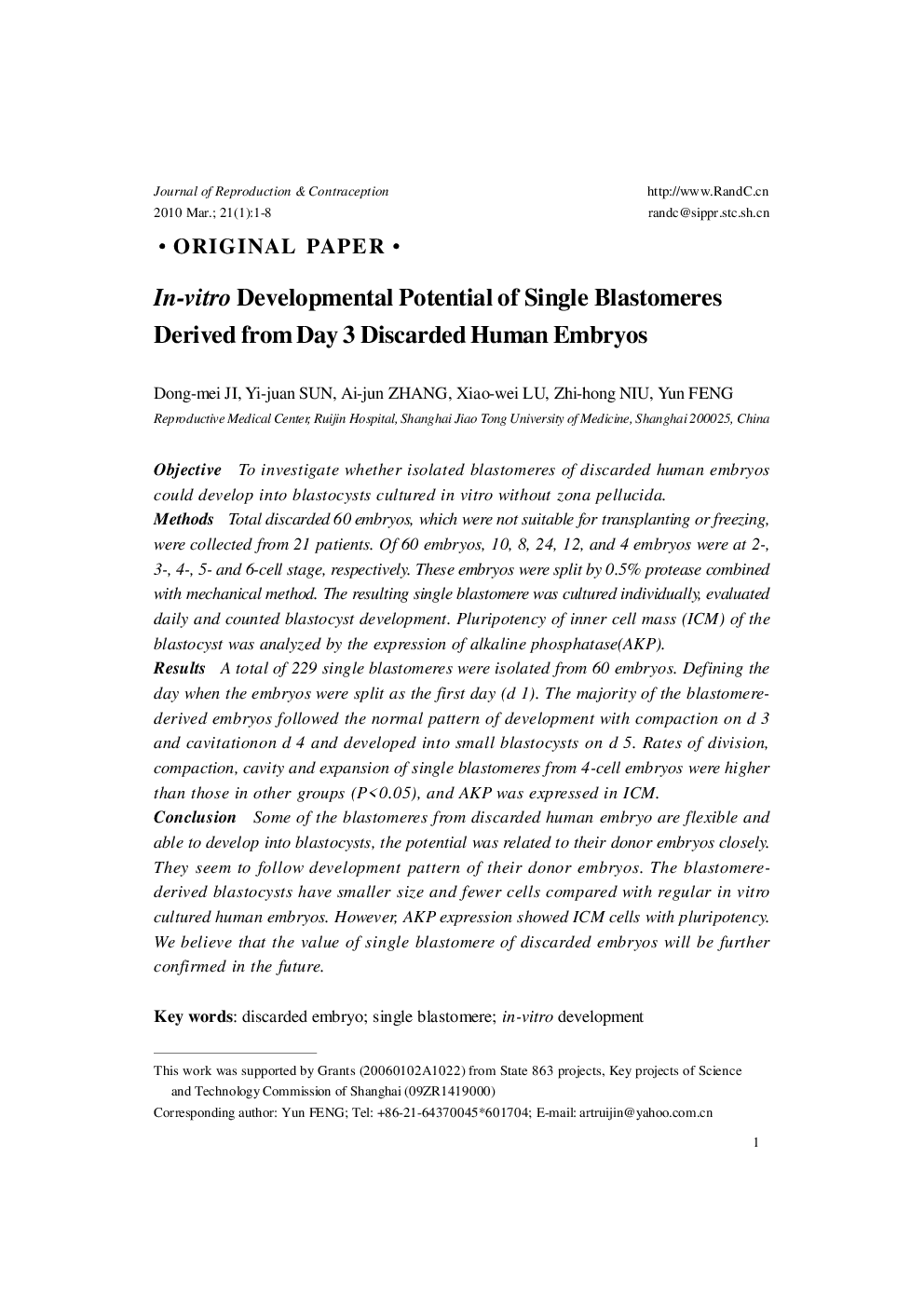| Article ID | Journal | Published Year | Pages | File Type |
|---|---|---|---|---|
| 3963588 | Journal of Reproduction and Contraception | 2010 | 8 Pages |
ObjectiveTo investigate whether isolated blastomeres of discarded human embryos could develop into blastocysts cultured in vitro without zona pellucida.MethodsTotal discarded 60 embryos, which were not suitable for transplanting or freezing, were collected from 21 patients. Of 60 embryos, 10, 8, 24, 12, and 4 embryos were at 2-, 3-, 4-, 5- and 6-cell stage, respectively. These embryos were split by 0.5% protease combined with mechanical method. The resulting single blastomere was cultured individually, evaluated daily and counted blastocyst development. Pluripotency of inner cell mass (ICM) of the blastocyst was analyzed by the expression of alkaline phosphatase(AKP).ResultsA total of 229 single blastomeres were isolated from 60 embryos. Defining the day when the embryos were split as the first day (d 1). The majority of the blastomere-derived embryos followed the normal pattern of development with compaction on d 3 and cavitationon d 4 and developed into small blastocysts on d 5. Rates of division, compaction, cavity and expansion of single blastomeres from 4-cell embryos were higher than those in other groups (P<0.05), and AKP was expressed in ICM.ConclusionSome of the blastomeres from discarded human embryo are flexible and able to develop into blastocysts, the potential was related to their donor embryos closely. They seem to follow development pattern of their donor embryos. The blastomere-derived blastocysts have smaller size and fewer cells compared with regular in vitro cultured human embryos. However, AKP expression showed ICM cells with pluripotency. We believe that the value of single blastomere of discarded embryos will be further confirmed in the future.
